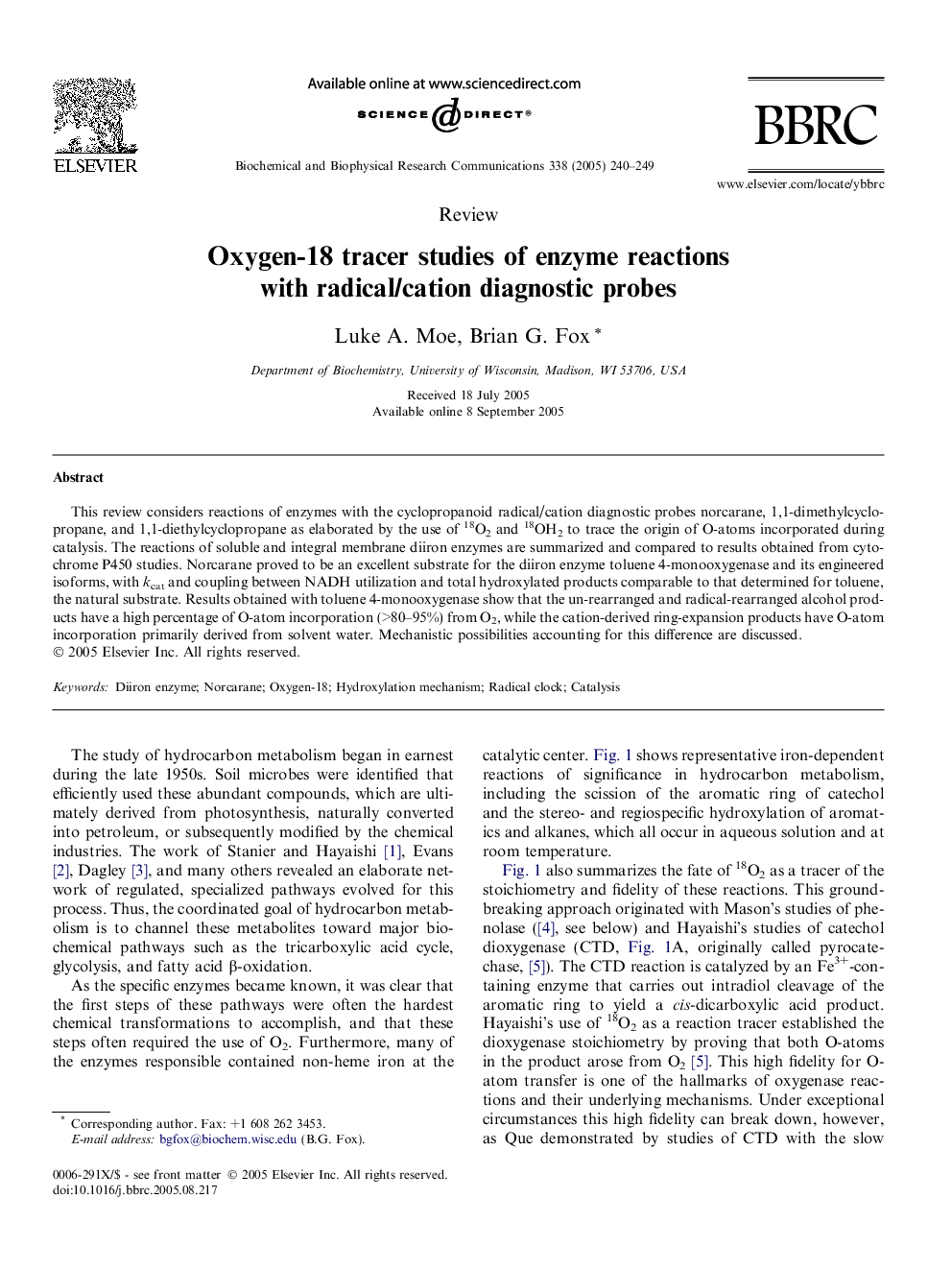| Article ID | Journal | Published Year | Pages | File Type |
|---|---|---|---|---|
| 10768149 | Biochemical and Biophysical Research Communications | 2005 | 10 Pages |
Abstract
This review considers reactions of enzymes with the cyclopropanoid radical/cation diagnostic probes norcarane, 1,1-dimethylcyclopropane, and 1,1-diethylcyclopropane as elaborated by the use of 18O2 and 18OH2 to trace the origin of O-atoms incorporated during catalysis. The reactions of soluble and integral membrane diiron enzymes are summarized and compared to results obtained from cytochrome P450 studies. Norcarane proved to be an excellent substrate for the diiron enzyme toluene 4-monooxygenase and its engineered isoforms, with kcat and coupling between NADH utilization and total hydroxylated products comparable to that determined for toluene, the natural substrate. Results obtained with toluene 4-monooxygenase show that the un-rearranged and radical-rearranged alcohol products have a high percentage of O-atom incorporation (>80-95%) from O2, while the cation-derived ring-expansion products have O-atom incorporation primarily derived from solvent water. Mechanistic possibilities accounting for this difference are discussed.
Keywords
Related Topics
Life Sciences
Biochemistry, Genetics and Molecular Biology
Biochemistry
Authors
Luke A. Moe, Brian G. Fox,
